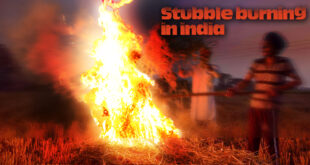Blame it on the weather. Swine flu continues to hover over Maharashtra, with health authorities attributing 60 deaths to the lethal H1N1 virus since January this year. While this year has seen fewer casualties than last, say doctors and health officials, a less-dominant, non-lethal strain of the virus, called H3N2, has been doing the rounds. Maharashtra, which had not recorded a single swine flu-related casualty, suddenly witnessed a dramatic surge in the number of H1N1 afflictions since July — 600 cases. In Pune and Nashik there were 25 and 23 deaths, respectively. Contributing factors Health authorities and medical practitioners ascribe this to prolonged wet spells over the western and northern parts of the State. “Both Pune and Nashik experience what climatologists call a ‘cold monsoon’ while areas like Nagpur receive what is termed a ‘warm’ or ‘humid’ monsoon. Since August, there was a month-long stretch where Pune barely received any sunlight, thus creating fertile grounds for the virus to breed,” said epidemiologist Dr. Pradeep Awate, who is the State surveillance officer in the Public Health Department. There were also the annual Ganesha festivities that helped the virus spread. “The majority of the cases are from the past two months. The ongoing Ganesha festivities, with large public congregations contribute further to the spread of the virus,” said Dr. Anjali Sabne, assistant medical officer, Pune Municipal Corporation. The only States in India with comparable data in terms of a toll, Dr. Awate said, were Rajasthan and Gujarat, with at least 130 deaths this year in both States. The H3N2 strain of the influenza ‘A’ virus has also been recorded in Maharashtra since the beginning of this year, but frequently H3N2 cases went unreported. This was because the subtype was not tested in laboratories the way throat swab samples of patients suspected of (H1N1) swine flu were, said a senior scientist from the National Institute of Virology (NIV), Pune. “Both these virus types, H1N1 and H3N2, are co-circulating not only across Pune district but also in other parts of the State. They have contributed to the spurt in influenza-like illnesses. Both strains have been in the air with varying intensity since January, but the situation is not alarming per se,” the scientist added
Source : https://www.thehindu.com/todays-paper/tp-opinion/in-the-grip-of-a-fever/article25018332.ece
 Chinmaya IAS Academy – Current Affairs Chinmaya IAS Academy – Current Affairs
Chinmaya IAS Academy – Current Affairs Chinmaya IAS Academy – Current Affairs



